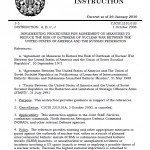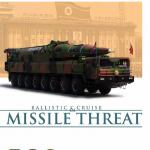
The reference provides warning and other appropriate measures to guard against the outbreak of nuclear war, either as a result of planned intercontinental ballistic missile (ICBM) or submarine-launched ballistic missile (SLBM) launches, or unauthorized or unexplained accidents or incidents involving a US space launch or event or implying a possible threat of a nuclear attack. Because the highest national importance is attached to agreements with the Russian Federation, the United States intends to prevent any event that would violate the agreements and implement actions minimizing the effect of any incident that might occur.

